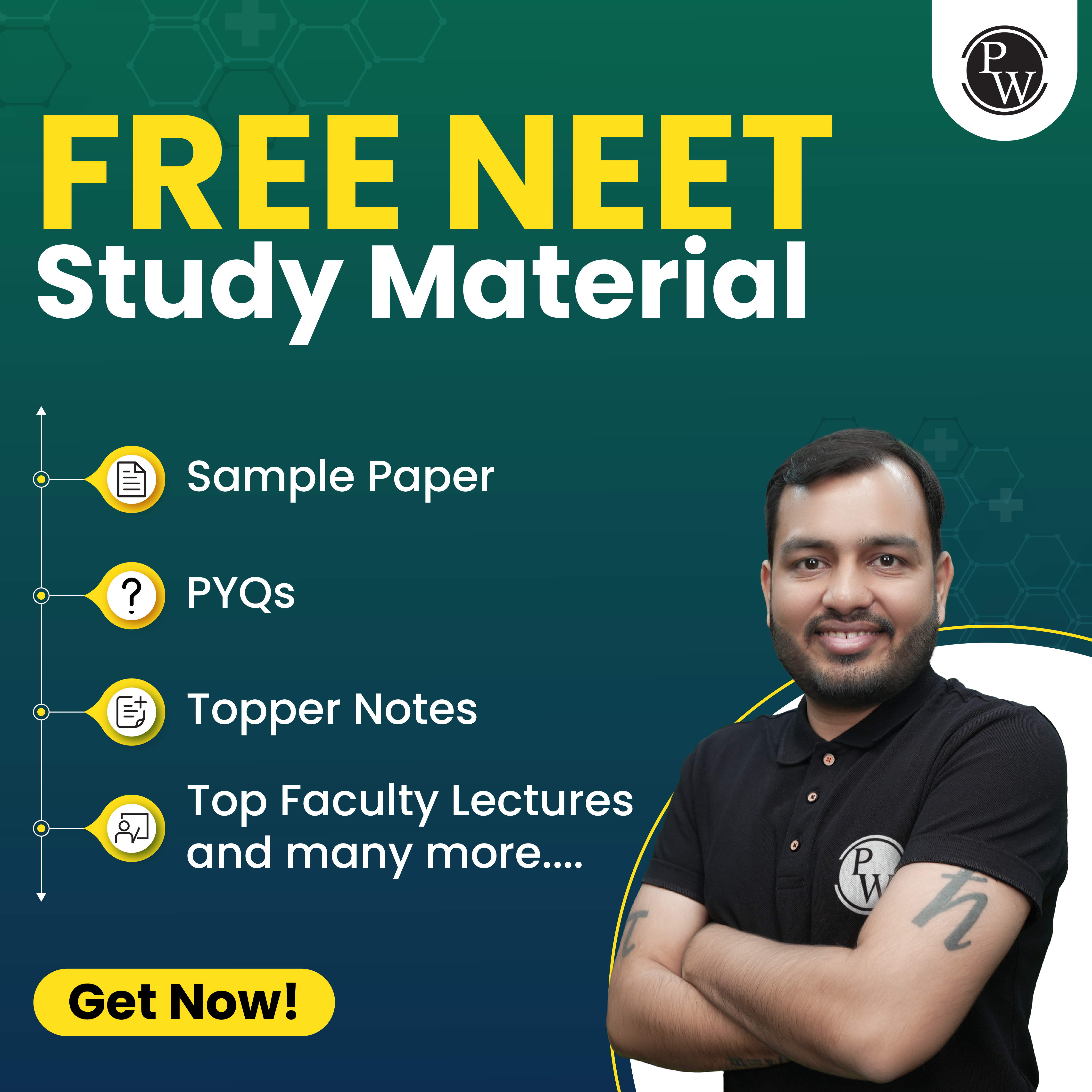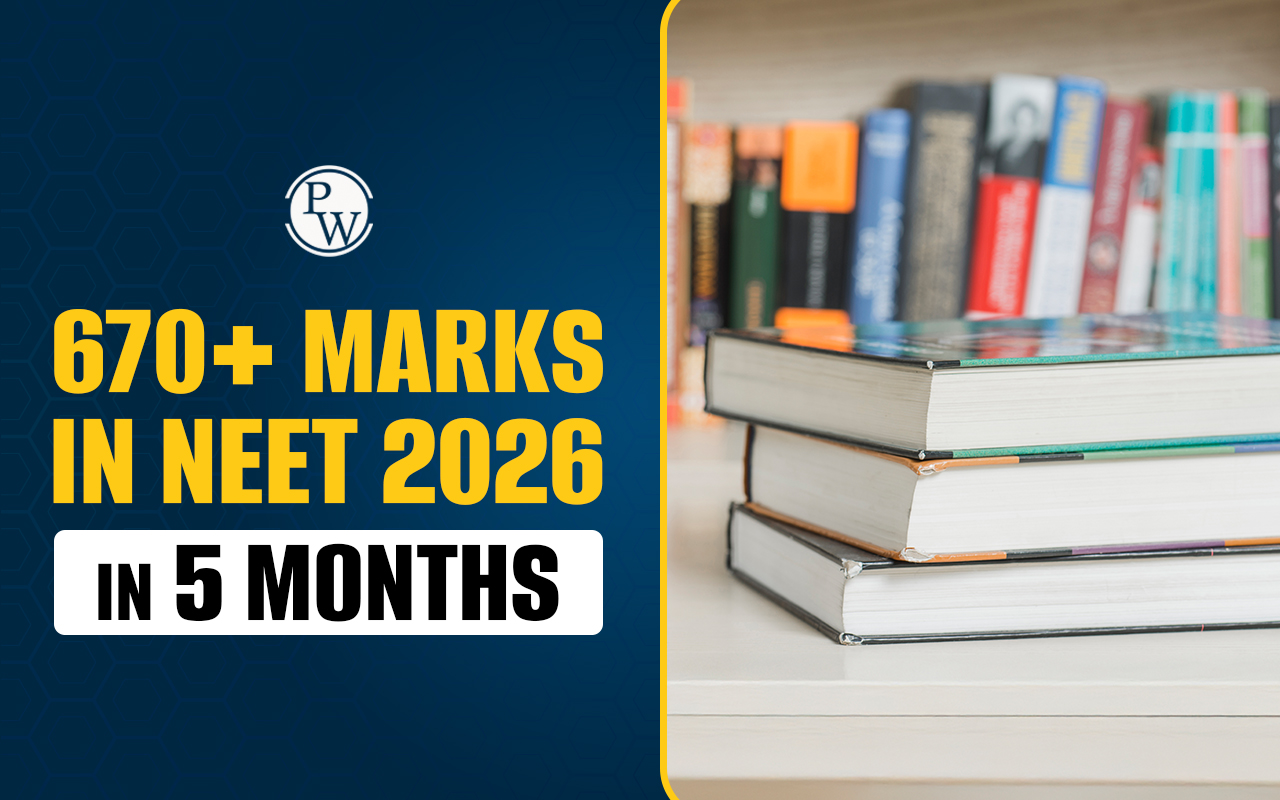
Digestion and Absorption NEET MCQ Introduction
Digestion and Absorption NEET MCQ: Digestion and absorption are two fundamental processes in our body to break down food and extract nutrients. Digestion is the process of breaking down large molecules of carbohydrates, proteins, and fats into smaller molecules with the help of digestive enzymes. The stomach plays a vital role in digestion by secreting hydrochloric acid that converts food into a semi-liquid mixture called chyme. Chyme then moves to the small intestine, where bile from the liver neutralizes it, and pancreatic enzymes further break down carbohydrates, proteins, and fats.
NEET Study Material, Free Sample Papers, Book, Toppers Notes, PYQs
Absorption occurs once these macronutrients are broken down into their most diminutive forms, such as glucose, amino acids, and fatty acids. These nutrients are then transported through small finger-like projections called villi lining the walls of the small intestine into our bloodstream for use by different organs throughout our body. In summary, digestion and absorption work together to ensure the proper breakdown of food components to release essential nutrients by the body for energy production.| NEET Exam Important Links | |
|---|---|
| NEET Syllabus | NEET Biology Notes |
| NEET Eligibility Criteria | NEET Exam Pattern |
| NEET Previous Year Question Papers | NEET Biology Syllabus |
Digestion And Absorption NEET MCQ
Q1. The release of pancreatic juice is stimulated by
- enterokinase
- cholecystokinin
- secretin
- Both 2 and 3
Answer – 4, Both 2 and 3
Explanation: Both 2 and 3 are correct. Enterokinase, or enteropeptidase, is an enzyme in the small intestine responsible for activating trypsin from pancreatic juice. Cholecystokinin (CCK) is a hormone produced in the small intestine that stimulates the release of enzymes and bile from the pancreas and gall bladder. Secretin is another hormone in the small intestine that stimulates the pancreas to release watery juice-containing enzymes called pancreatic juice.
Q 2. In vertebrates, lacteals are found in
- ileum
- ischium
- esophagus
- Ear
Answer - 1, ileum
Explanation: There are lacteals in the ileum, a part of vertebrates' small intestines.
In the small intestine, especially in the ileum, lacteals are specialized lymphatic capillaries that absorb dietary fats and fat-soluble vitamins. During digestion, lacteals capture fats as tiny droplets called chylomicrons, which are then transported through the lymphatic system to reach the bloodstream. The ischium is a bone in the pelvis, the esophagus is a muscular tube that connects the throat and stomach, and the ear is a sensory organ. None of these structures are associated with lacteals.Also Check:
Q 3. The hormone that stimulates the stomach to secrete gastric juice is
- Gastrin
- Renin
- Enterokinase
- Enterogasterone
Answer – 1, Gastrin
Explanation: Gastrin is a hormone released in response to stomach acid and stimulates the secretion of gastric juices. It also helps regulate the balance between acid and bicarbonate production, allowing for proper digestion and absorption of nutrients.
Q 4. Rennin acts on
- milk changing casein into calcium para caseinate at 7.2 - 8.2 pH
- protein in stomach
- fat in intestine
- milk changing casein into calcium para caseinate at 1-3 pH
Answer – 1, milk changing casein into calcium para caseinate at 7.2 - 8.2 pH
Explanation: At a pH range of 7.2-8.2, renin converts casein into calcium para caseinate in milk.
The enzyme rennin, also known as chymosin, is found primarily in the stomach of young mammals, including humans, during infancy. Rennin aids the digestion of milk proteins, specifically the casein protein. A specific peptide bond in the casein protein is cleaved by renin in the stomach, producing calcium para caseinate. It aids in the digestion of milk proteins by coagulating and curdling them. RENNIN's highest enzymatic activity occurs at a pH range of 7.2-8.2, which is slightly alkaline. At this pH range, calcium para caseinate is formed from casein. Generally, the stomach has a pH range of 1 to 3. However, regarding milk digestion, rennin is still active at a slightly alkaline pH range. Rennin, at a pH range of 7.2-8.2, changes casein into calcium para caseinate in milk.Q 5. Where in the digestive system does most of the absorption of nutrients take place?
- Stomach
- Small intestine
- Large intestine
- Mouth
Answer - 2, Small intestine
Explanation: When food enters the stomach, it is broken down into smaller particles for easier digestion, and most of the nutrients are absorbed in the small intestine. In the small intestine, enzymes break down fats, proteins, and carbohydrates into their essential components, so they are absorbed into the bloodstream. Water, minerals, vitamins, and bile acids are absorbed by the large intestine, while bile acids are reabsorbed.

Q 6. Which enzyme breaks down carbohydrates in the mouth?
- Amylase
- Proteases
- Lipase
- pepsin
Answer – 1, amylase
Explanation: The enzyme that breaks down carbohydrates in the mouth is amylase. It is secreted by salivary glands and begins breaking down carbohydrates into simpler forms for easier digestion and absorption in the small intestine. Saliva also contains proteases, which help break down proteins, as well as lipase and pepsin, which break down fats and proteins.
Q 7. What do you call the wavelike muscle contractions that move food through the digestive system?
- Peristalsis
- Segmentation
- Excited
- none of the above
Answer – 1, Peristalsis
Explanation: Peristalsis is a wavelike muscle contraction that moves food through the digestive system. Peristalsis begins in the esophagus and continues to the rectum, pushing small amounts of food. This process of food digestion is an essential part of human anatomy.
Q 8. What role does hydrochloric acid play in the stomach?
- Breaks down carbohydrates
- Breaks down proteins
- Emulsify fat
- none of the above
Answer - 2, Breaks down protein
Explanation: Hydrochloric acid helps to break down proteins in the stomach. It is secreted by the stomach's parietal cells and helps break down proteins into small peptides and amino acids. This allows them to be absorbed more efficiently by the body.
Q 9. What do you call the semi-solid mixture of food and digestive juices in the stomach?
- Chyme
- Bolas
- Feces
- none of the above
Answer - 1, Chyme
Explanation: The semi-solid mixture of food and digestive juices in the stomach is called chyme. This mixture is then further broken down in the small intestine with the help of enzymes to allow for nutrient absorption.
Q 10. Which cells in the 'Lieberkuhn crypts' secrete the antibacterial lysozyme?
- Argentaffin cells
- Zymogen cells
- Kupffer cells
- Paneth cells
Answer - 4, Paneth Cells
Explanation: Paneth cells are the cells that secrete the antibacterial lysozyme in the Lieberkuhn crypts. These cells are responsible for producing enzymes and proteins that aid in the digestion and absorption of nutrients.
Q 11. Human primary dentition differs from permanent dentition in that it does not have the following types of teeth
- Premolar
- Molars
- Canines
- Incisors
Answer - 1, Premolar
Explanation: It consists of 20 teeth of incisors, canines, and molars, but it omits premolars and permanent molars. Premolars have two cusps and emerge during the transition from primary dentition to permanent dentition, yet they are absent in the former. Permanent molars are more significant than primary molars and typically come after shedding the former; however, they too, do not appear in the primary dentition.
Q 12. A dental disease characterized by molting teeth is due to the presence of a certain chemical element in drinking water. Which of the following is that element?
- Mercury
- Chlorine
- Fluorine
- Boron
Answer - 3, Fluorine
Explanation: The dental disease characterized by the mottling of teeth, known as dental fluorosis, is due to the presence of excessive amounts of fluorine (fluoride) in drinking water.
Fluoride is a naturally occurring chemical element that is often added to drinking water supplies to prevent tooth decay. However, when the fluoride concentration exceeds optimal levels, it can lead to dental fluorosis. Dental fluorosis occurs during tooth development, particularly in children, when the excessive intake of fluoride interferes with the formation of tooth enamel. It can result in a range of visible changes in the teeth, including white spots, brown stains, or even pitting and enamel loss in severe cases.Q 13.When two friends are eating together at a dining table, one of them suddenly coughs while swallowing some food. This cough could have been due to improper movement of:
- diaphragm
- neck
- tongue
- epiglottis
Answer - 4, epiglottis
Explanation: The coughing would have been due to improper movement of the epiglottis. The epiglottis is a flap at the back of the throat that helps close off the windpipe while swallowing so food and drink do not enter the lungs. If this movement isn't working properly, it can cause food and drink to go into the wrong pipe and lead to coughing or choking.
Q 14. Cholecystokinin and duocrinin are secreted by
- adrenal cortex
- thyroid gland
- pancreas
- intestine
Answer - 4, intestine
Explanation: Cholecystokinin is released in response to partially digested proteins and fats; it then stimulates the gallbladder and pancreas to produce bile and enzymes, aiding in digestion.
Secretin is activated by acidic chyme entering the small intestine from the stomach; this encourages the pancreas to secrete bicarbonate-rich pancreatic juice which helps neutralize the acidity of the contents.Q 15. Inhibition of gastric and stimulation of gastric, pancreatic, and bile secretions are controlled by hormones
- gastrin, secretin, enterokinin, and cholecystokinin
- enterogasterone, gastrin, pancreozymin, and cholecystokinin
- gastrin, enterogasterone, cholecystokinin, and pancreozymin
- secretin, enterogasterone, gastrin, and enterokinin
Answer - 1, Gastrin, secretin, enterokinin, cholecystokinin
Explanation: The correct answer is gastrin, secretin, enterokinin, and cholecystokinin.
These hormones play important roles in the regulation of gastric, pancreatic, and bile secretions:- Gastrin: Gastrin is released by the stomach in response to the presence of food. It stimulates the secretion of gastric acid, promoting digestion in the stomach.
- Secretin: Secretin is released by the small intestine in response to acidic chyme entering the stomach. It stimulates the secretion of bicarbonate-rich pancreatic juice, which helps neutralize the acidity of the chyme.
- Enterokinin: Enterokinin, also known as enterogastrone, is released by the small intestine in response to the presence of fats and partially digested proteins. It inhibits gastric secretions, slowing down gastric emptying and allowing for proper digestion and absorption in the small intestine.
- Cholecystokinin: Cholecystokinin (CCK) is released by the small intestine in response to the presence of partially digested proteins and fats. It stimulates the release of bile from the gallbladder and pancreatic enzymes from the pancreas, aiding in the digestion of fats and proteins.
Check More Important NEET Biology MCQ
Digestion and Absorption NEET MCQ FAQs
Is digestion and absorption there for NEET?
What is digestion and absorption in biology?
Is digestion and absorption removed from Ncert?
What is absorption for Ncert?
What are the main points of absorption?










